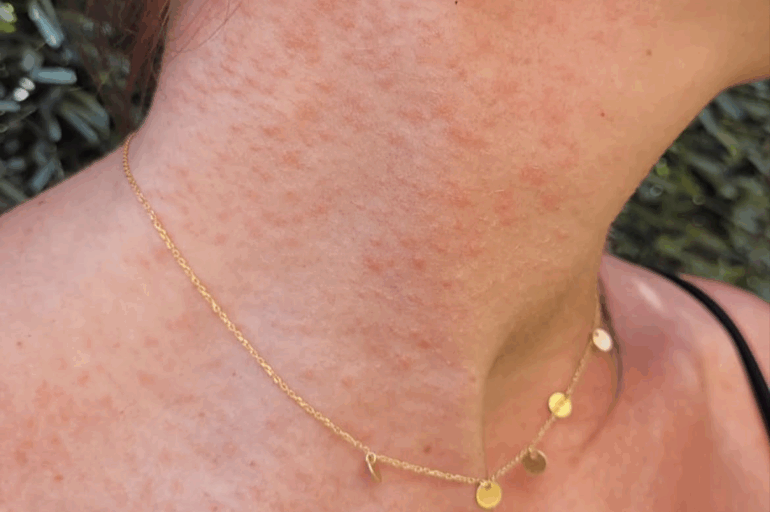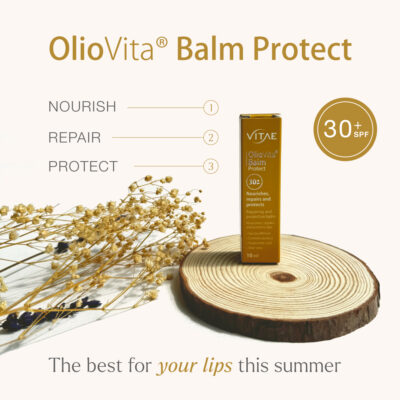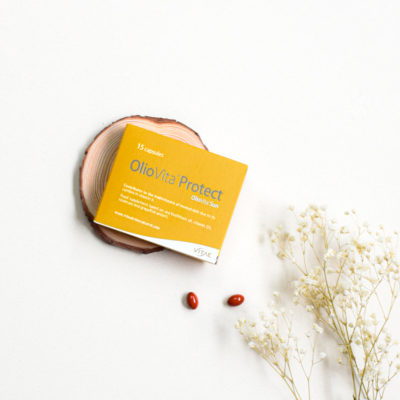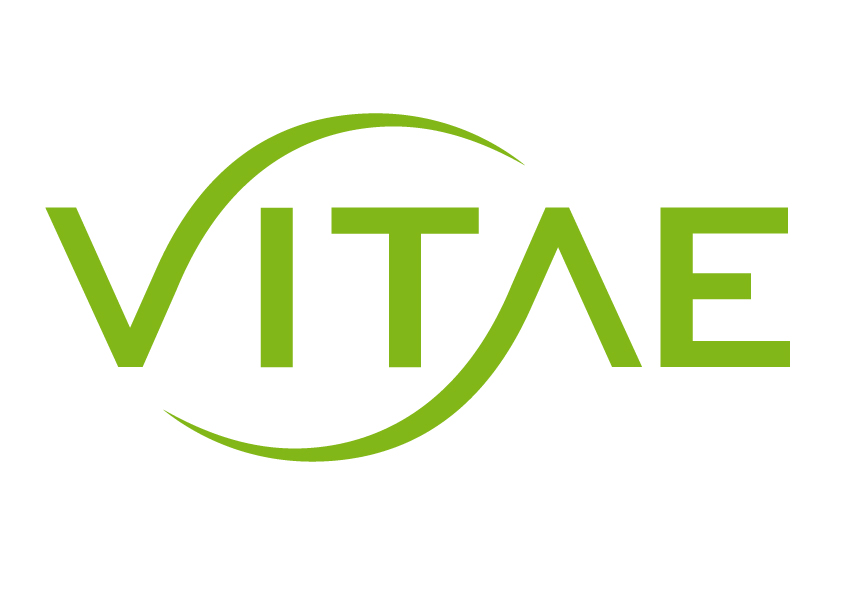Have you noticed that with the first sunny days, your skin reacts with small, itchy, red, or even inflamed bumps? You’re not alone—many people experience this type of skin outbreak when exposed to the sun, especially after winter or during the first intense sun exposures. This is known as sun allergy or polymorphic light eruption, a skin reaction that appears as sun rashes, sun-induced bumps, or even small hives that cause itching and discomfort.
Although they are often confused with acne or dermatitis, these itchy bumps have a different origin: ultraviolet radiation. The good news is that there are ways to prevent and treat them from within, thanks to allies like oral sun protection supplements, which strengthen the skin against the sun and reduce these types of reactions.
Does this sound familiar? If you also suffer from these annoying sun-induced bumps, keep reading to learn why they happen and how you can effectively prevent them.
What Are Sun-Induced Bumps and Why Do They Appear?
When we talk about sun-induced bumps, we refer to those skin eruptions that appear after exposure to ultraviolet radiation, especially in spring and summer.
Although they are often mistaken for acne, their cause and treatment are different. These small skin lesions are not due to clogged pores but rather to a sensitivity reaction to the sun.
One of the most common causes is sun allergy or polymorphic light eruption, a term that includes various skin reactions triggered by sunlight.
The most frequent ones include:
-
Polymorphic light eruption (PLE): Characterized by bumps, itching, redness, and a burning sensation, typically on areas like the chest, shoulders, or arms.
-
Solar urticaria: A less common but more intense reaction where hives appear just minutes after sun exposure.
-
Photosensitivity: Triggered by certain medications, cosmetics, or even foods that, when combined with sun exposure, generate an inflammatory response in the skin.
The good news? These sun-induced eruptions can be prevented with proper protection—not just externally.
How to Recognize Sun-Induced Bumps
Recognizing sun-induced bumps can help you act quickly and prevent the reaction from worsening with future sun exposure. Unlike common acne, these itchy bumps appear shortly after sun exposure, especially if the skin is unaccustomed to sunlight or hasn’t been adequately protected.
Common symptoms include intense itching, redness, and a burning sensation. In many cases, the outbreak appears as a rash: small lesions that may look like bumps or tiny blisters and sometimes come with flaking.
The most affected areas are usually those most exposed: the face, shoulders, arms, and especially the chest.
Recurring symptoms after sun exposure are a clear sign you may be dealing with a sun allergy.
Difference Between Sun-Induced Bumps and Acne
One of the most frequent summer questions is whether those bumps that appear after sun exposure are acne or something else. Though they may look similar at first glance, they are not.
Understanding the difference is key to treating them correctly:
| Characteristic | Sun-Induced Bumps | Common Acne |
|---|---|---|
| Main Cause | Reaction to sun (light eruption, photosensitivity) | Pore blockage + bacteria + excess sebum |
| Typical Areas | Chest, shoulders, face | Face, back, chest |
| Onset | Shortly after sun exposure | Gradual, over time |
| Appearance | Small, itchy red bumps | Pimples, blackheads, inflamed spots |
| Response to Sun | Worsens with sun | May initially improve, then worsen |
| Duration | Days (if treated and sun exposure is avoided) | Weeks or months, depending on severity |
Also, while some believe the sun helps with acne, it may only dry pimples temporarily. In the long run, it can make it worse, especially if it irritates the skin or causes a rebound effect.
How to Get Rid of Sun-Induced Bumps: Prevention and Treatment
Eliminating or preventing sun-induced bumps isn’t always easy, especially if your skin has already developed sensitivity to sunlight. That’s why the best approach is to take action before, during, and after sun exposure—combining external care with internal protection. Here’s how to do it effectively:
Prevention: Your Best Defense
The most effective way to prevent these reactions is to reduce direct sun exposure, especially during peak hours. Wearing lightweight clothing that covers sensitive areas (like the chest or shoulders) also helps protect your skin. And of course, using a broad-spectrum physical sunscreen is essential to block both UVA and UVB rays.
We also recommend oral sun protection, an increasingly popular strategy for those who suffer from recurring sun eruptions. These supplements contain antioxidants and vitamins that help prepare your skin from within, reducing the inflammatory response to sun exposure.
Formulas like OlioVita Protect combine sea buckthorn omega-7 with vitamin D, lycopene, and antioxidant plant extracts, creating an internal barrier that helps protect the skin and prevents the appearance of these annoying bumps. It’s an ideal support for those looking for an effective, longer-lasting remedy for sun-induced breakouts.
Topical Treatments to Soothe the Skin
Once the reaction appears, it’s important to avoid scratching and apply soothing products. Look for creams specially formulated for sun allergy, which relieve itching and reduce inflammation. In more severe cases, a dermatologist may recommend an antihistamine to help manage symptoms like intense itching or redness.
These treatments help relieve discomfort, but they don’t address the root cause.
Don’t wait for sun-induced bumps, itching, or rashes to ruin your time outdoors.
Take care of your skin from the inside and strengthen its natural defenses with OlioVita Protect, the oral sun protection supplement that combines antioxidants, omegas, and plant extracts to help you prevent sun allergy effectively and naturally.
Start preparing your skin for the sun today—your skin will thank you.






